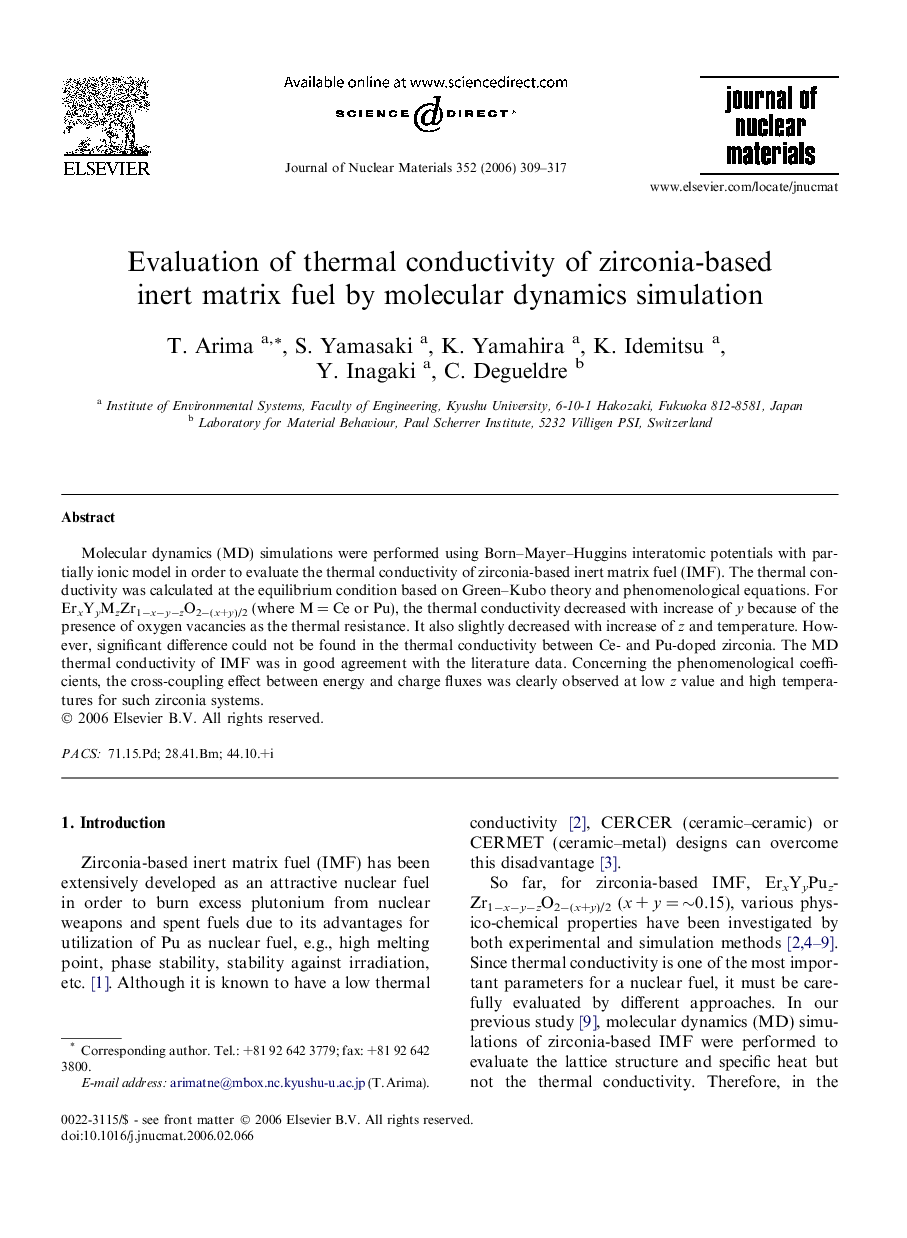| Article ID | Journal | Published Year | Pages | File Type |
|---|---|---|---|---|
| 1570034 | Journal of Nuclear Materials | 2006 | 9 Pages |
Molecular dynamics (MD) simulations were performed using Born–Mayer–Huggins interatomic potentials with partially ionic model in order to evaluate the thermal conductivity of zirconia-based inert matrix fuel (IMF). The thermal conductivity was calculated at the equilibrium condition based on Green–Kubo theory and phenomenological equations. For ErxYyMzZr1−x−y−zO2−(x+y)/2 (where M = Ce or Pu), the thermal conductivity decreased with increase of y because of the presence of oxygen vacancies as the thermal resistance. It also slightly decreased with increase of z and temperature. However, significant difference could not be found in the thermal conductivity between Ce- and Pu-doped zirconia. The MD thermal conductivity of IMF was in good agreement with the literature data. Concerning the phenomenological coefficients, the cross-coupling effect between energy and charge fluxes was clearly observed at low z value and high temperatures for such zirconia systems.
